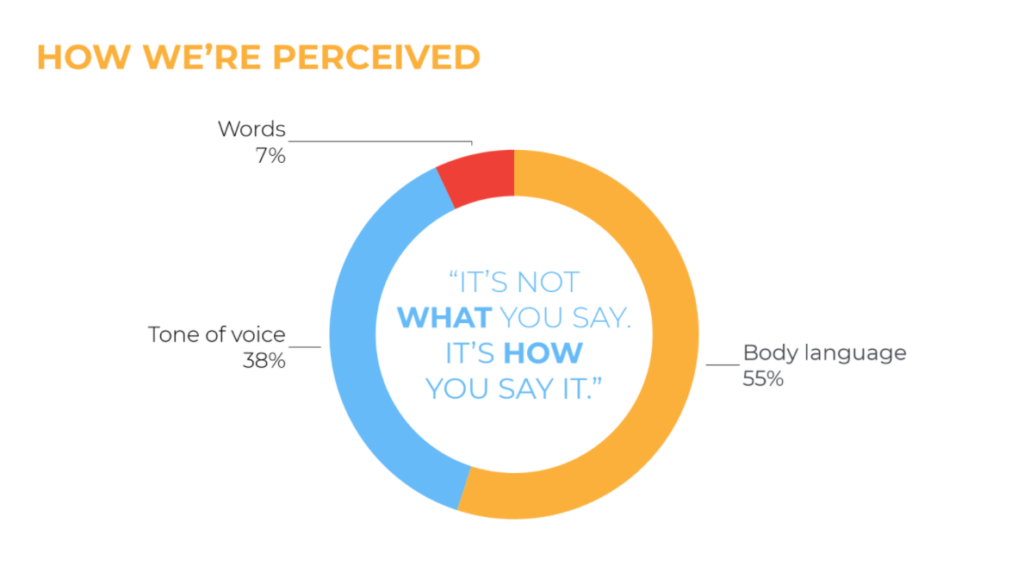12
FEB 2021Last month, Adela attended a webinar hosted by Tippie College of Business at the University of Iowa. This webinar was given by Nick Westergaard, a marketing specialist and marketing professor at the University of Iowa. For more information about Nick Westergaard, go to his website at: nickwestergaard.com. This webinar provided tips and strategies to better our communication skills using tools such as Zoom, Skype, and WebEx. Nick used his experience as a virtual conference presenter and online educator to teach the attendees how to better communicate and present ideas and information within our own teams. With COVID-19, our world has only gone more digital. Virtual meetings have become the only option to slow the spread of the virus. Learning how to communicate effectively and efficiently in our digital world will help your business stay on track and succeed.


In this webinar, the key audience takeaways were to master the technical ins and outs of online meetings, project confidence and clarity with vocal delivery, and reinforce key points with the nonverbal cues that matter most in virtual presentations. As an attendee, Adela can gladly say she learned to adapt previously learned in-person presentation skills to better fit virtual presentations and learned new tips that will help our team at EmployStats.
To start, Nick spoke about how public speaking is a key skill many employers want in an employee. This skill is not easily learned and even terrifies people more than death! To help people with this skill, Nick explained the way to better standout and develop our skills.
Three items are of focus when making a presentation.
Story
Visual
Delivery
Creating a story rather than stating fact after fact helps your audience feel more engaged in your idea/information that you are presenting. Being persuasive and using your emotions is key to audience engagement. Stories move people and become engraved into their memory more easily. To help tell a story, Nick provided a template that was called “Story Sketch”. It breaks down into three sections: Context, Contrast, and Call to Action.
Under Context, the questions “Who’s your audience?” and “Why are you in front of them?” should be answered. Under Contrast, the questions “Where are they now?” and “Where do you want them to be?” should be answered. Under Call to Action, the question “What do you want them to do?”. Within the story, you should include supporting stories that are personal, other people’s, or simple analogies. The most important part of your story is the opening and closing. This is when your audience is most engaged, so use it wisely!! This is when you should state and restate important points that you want to leave with your audience. Using this template will help you and your audience stay engaged.
In a presentation, visuals are important. Having a visual provides another way to retain information, so not only are they hearing you, they are seeing the important facts. Pictures provide better recall, better comprehension, and help reinforce learning styles. Pictures are not the only visual you should focus on. When presenting virtually, you have to think about what you look like to your audience. Things to check before your presentation are lighting, the angle of your camera, and visual noise.
To make sure your lighting is good, either present in front of a window that lets in natural light or buy a ring light. Check your camera angle by simply looking at what you look like in the view box. People want to see you, not your ceiling or a portion of your face. It’s super simple, but people tend to forget this part. A tip Nick gave was putting your view box under your camera so you can see what you look like while looking at your camera.
As well, the items behind you can create “visual noise”. If you have an obnoxious painting/art piece, messy table, or animals/children running around in the background, people will start to lose interest in what you are presenting and start to focus on things around you. Another item to be aware of is audio noise. When presenting, it is best practice to use headphones or a microphone to prevent echoes or cause your audience to not hear you. Stay away from loud places like a coffee shop or somewhere near construction sites. When Nick practices his presentations, he records them in a quiet room with natural light, and he puts a sign on his office door saying he is recording. This helps see what the audience is seeing and make any adjustments needed.
Delivery
The last item that will better your presentation is how you deliver your story and visuals. Nick provided a breakdown of what engages the audience. This breakdown includes the words you say, the tone you speak, and the body language you present. Your presentation and visuals can be great, but if you cannot deliver them in a way that will keep your audience listening, you have almost wasted your content. Nick’s breakdown will show you what your audience is most interested in.

At only 7% are the actual words you are saying. When speaking, keep your words relatable to your audience by using language that is familiar. If you are presenting new ideas to a crowd or your team, try adding definitions to a slide or providing a fact sheet before the presentation. Taking short pauses throughout your presentation also allows more understanding and comprehension. Your team will appreciate these short pauses to take notes or think of questions.
Next, 38% is the tone of your voice. Your tone of voice is especially crucial when presenting to a crowd and your colleagues because it helps keep them interested. According to Nick, your tone should be a “casual authority” and provide variety during different sections in your presentation. This sounds like you are confident in your ideas and feel comfortable in what you are presenting. Another tip Nick suggests is to pay attention to how your mouth is moving. When reviewing your practice recording, watch how your mouth moves. If your mouth is moving then you should be able to hear your words more clearly.
Lastly, 55% is your body language. The most important thing to do is relax, look at the camera, and smile. Being anxious is normal, but if you prepare and know your content, you will be great!! Not only should you look at the camera, but point your body to the camera by squaring up to it. Nick said to make yourself big. He stands up during his presentation to keep his posture upright and also uses computer stands to help keep everything squared up to him.
Nick provided several tips and suggestions to better your presentation.
At EmployStats, we will start using these new tips to further improve our presentation skills in future courses we teach or webinars we attend.
We want to stand out virtually and thanks to Nick Westergaard, we have moved closer to that goal!
Want to stay up to date with EmployStats presentations and blogs?
Follow our LinkedIn Page for our latest posts!
To learn more about Nick Westergaard, you can visit his website at: https://www.nickwestergaard.com/
To learn more about Employstats, you can visit our website at: https://employstats.com/

